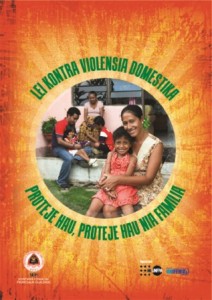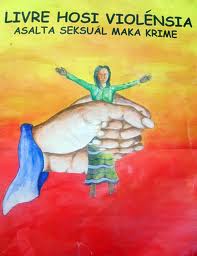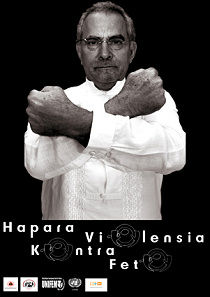I have been visiting East Timor and the city of Dili since 2001. It has been possible to observe the numerous changes taking place as the city has recovered from conflict, political and social crises and established itself as the vibrant capital of a multiethnic, multilingual independent nation. On my 2010 visit I took the opportunity to make a study of public signage in the commercial area of downtown Colmera. Colmera has suffered economically somewhat with the establishment of Timor Plaza but it is still a central business hub being closer to the port, hotels, parliament and government buildings than Timor Plaza. Personally, I much prefer Colmera to the generic shopping precinct of Timor Plaza. You may be able to sit in globally marketed coffee shops, get an ice-cream or milkshake and see a movie at Timor Plaza, but to me Colmera feels more like the real East Timor.
Today, the East Timorese represent themselves and see themselves reflected in the linguistic landscape. It is fascinating to watch the political, socio-economic and development discourses playing out in the city’s linguistic landscape and to observe how the East Timorese mark their identity though local advertising, logos on vehicles, changing street names, shop signs, names of buildings, companies and businesses, and graffiti. The linguistic landscape is not only a site where the power and status of languages is marked out and contested but also where various actors display their identities through the language choices they make in public signs. Linguistic landscape studies were still in their early days at that time I wrote my article and I think it reflects the tensions between different methods of sociolinguistic analysis; between counting signs and trying to understand their meaning and significance in place.
In my article, I discuss the iconicity, indexicality and visual grammar of official (referring mainly to government and large global corporations) and non-official (referring mainly to grassroots, small commercial actors) public signage in Dili and I analyse the use of language in a range of signs using the notion of language on display. I also explore the implications for language policy, taking account of the wider processes of social, political and economic change at work in this new nation.
Since writing this article, I have become interested in how the linguistic landscape can be a medium for public education and literacy. Posters supporting the campaign against domestic and sexual violence are an excellent example of how signage can be used to promote beneficial social change. We also see Tetum being used in new and distinctly modern domains.
Kerry Taylor- Leech


